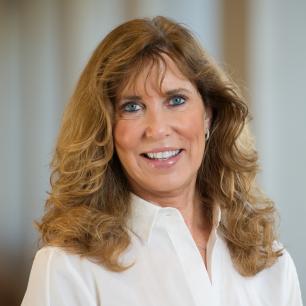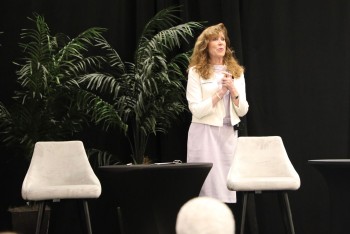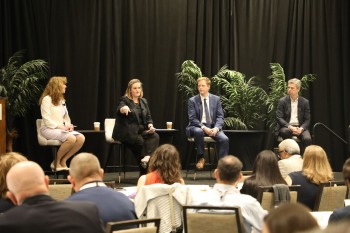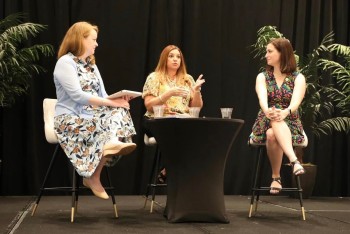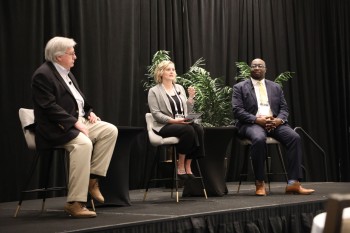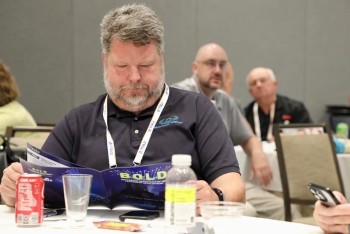The countdown for Smart Rural Community Live has come and gone as we wrapped the one-of-a-kind summit this week in Florida. I couldn’t have been more excited to participate and more loaded up with ideas heading back home.
Nearly 200 participants including NTCA rural broadband providers, community leaders, economic developers, rural academics, healthcare providers, app developers, educators and others vested in the future of rural America came together to become a living ecosystem of interests with one common goal: creating Smart Rural Communities across rural America. The chatter during general and breakout sessions was at an all-time high and further proved that NTCA members have a lot to share in ideas, best practices and out-of-the-box thinking. Collaborative spirit was also at an all-time high, and my workbook that our fabulous team created was filled with notes, contacts and next steps by the time I hit the airport.
The opening session provided a timely look at the federal programs and players that are helping connect the unconnected, including the $42.5 billion Broadband Equity, Access and Deployment (BEAD) Program and U.S. Department of Agriculture’s ReConnect program, and programs that will ensure those connections can remain affordable, including the FCC’s vital Universal Service Fund. I was grateful to be joined by my friends Will McIntee, head of rural engagement at the White House, Kathryn de Wit, head of the Pew Charitable Trusts Broadband Access Initiative, and Rural Utilities Service Administrator Andy Berke, all of whom traveled in with me from the historic White House event announcing the state BEAD allocations and then ran off to other industry events during this incredibly busy week for broadband.
Kathryn set the stage by introducing the perspective of states (one day after they were awarded their BEAD allocations!), sharing that leaders see connectivity challenges as interrelated to other challenges like access to affordable housing, good health care and job opportunities. And while policymakers don’t always get excited about technology, they do get really excited about what you can do with it, especially when that means improving the quality of life for residents and boosting local economies. She pointed out that for every dollar a state spends on affordable broadband (and teaching people how to use it), the state economy benefits by $4. This 4 to 1 ratio really resonated with me, and I know we will find more ways to share it with state leaders.
We also talked about the dangerous homogenization of rural America and the need to tailor solutions to individual communities whose demographics are ever changing, with Will sharing that having grown up in a small Iowa town he understands that, “if you've been to one rural community you’ve just been to one rural community,” and that has informed the White House’s targeted outreach efforts. Andy—a former Chattanooga, Tenn., mayor— shared that the urban-to-rural migration also means Smart Rural Communities have a chance to stand out, saying, “smart communities with the infrastructure that people need are going to benefit greatly.” He also noted that folks should be able to work where they want to live and robust broadband networks enable that.
By design, this discussion led perfectly to some afternoon dives into the impacts of connectivity on agriculture, health care and even how reinvesting in rural youth can help them stay in the communities where they grew up. The hardest part was choosing which breakouts to attend. I found myself splitting the baby by bopping into each of them for half because I simply didn’t want to miss a thing.
On ag tech, our panel of broadband and farming leaders, including Emily Buckman of the American Farm Bureau and Jill Kuehny with KanOkla Networks (Caldwell, Kan), focused on how an aging cohort of farmers is increasingly relying on technology to improve precision and efficiency. Of course, folks were still talking about the bovine facial recognition that we had showcased last year in this smart ag arena.
“Broadband for the Things We Don’t Like to Talk About” was powerful with Judge Fred Moses from Hocking County, Ohio sharing how broadband has assisted in rehabilitation for substance use disorders and has helped him create supportive relationships for those in the court system. He also put out a timely reminder on the importance of kindness as we help those struggling. “Be Kind” has long been a mantra of mine but it never hurts to be reminded. Liz Kohler, the founder of Nexion Solutions, shared broadband-enabled devices that support domestic abuse victims and how these devices—in action — have saved lives.
The room discussing esports was packed and engaged. I loved that Jana Wallace with PTCI (Guymon, Okla.) and Leo Anderson with Paul Bunyan Communications (Bemidji, Minn.) were so game to share their success and lessons learned. Amy Hudson Estepp, director of educational technology from Franklin City schools in Ohio, was a wealth of information on how to set up teams. She blew me away with the number of students she coaches in this arena who have received college scholarships. It’s time to take esports seriously. I’m not kidding, engaging your technically engaged youth in your community by supporting these programs sets you on the path to home-growing your workforce. The energy in the room almost made me want to pull out my old Mario Kart games!
Empowering healthcare was also most informative (catching the theme here? Everything was informative). From Simeon Goder with Teladoc’s monitoring devices for diabetics to Boyd Mark with Southeastern Telehealth Resource Center in Georgia sharing all the free resources that exist for communities to get the tools needed to support local telehealth initiatives, I am hoping everyone in the room took ideas home with them. Jason Zibert, community connected health manager from Benson Healthcare in Arizona, talked about how hybrid health is not only the future of healthcare, but also has a 20%positive impact on improving health outcomes. I’ll take that extra 20% advantage any day when it comes to my health.
My fingers are getting tired, and your eyes are likely weary, but let me add that the community leaders who joined the fun to share how they collaborate on the ground with NTCA members was also exciting. Airbnb training? Zoom prospector? Call center job creation? Engaging local leaders? Check, check and check. My thanks to folks like Keith Gabbard with PRTC (McKee, Ky.) and Anita Hollenhorst from CTC (Brainerd, Minn.) for bringing community leaders to share in the conversation.
Wrapping Day One with “The Art of the Possible” had Elizabeth Brown from PTCI (Guymon, Okla.) and Andy Henderson from Shawnee Communications (Equality, Ill.) sharing their fun stories of success in implementing Smart Rural Community ideas and interacting with the audience on cool ideas that everyone was game to share with one another.
The spirit and energy continued on day two with a great discussion on digital inclusion between Andy Brown from JSI, Julie Bergman from Rainbow Telecommunications Association (Everest, Kan.) and Carlos Nathan from the Florida NTIA office, some analysis of economic measures from Roberto Gallardo of Purdue University and a fascinating analysis from Brian Whitacre at Oklahoma State University encouraging NTCA members to match their policy efforts with storytelling. The numbers alone are powerful but putting them into context for what they mean for real consumers is memorable.
I couldn’t think of a better way for us to end the day-and-a-half idea exchange than a session on attracting and retaining rural youth where we heard from Cadie Bergen, senior recruitment manager for the American Connection Corps with the amazing Lead for America program and Jarad Plair, farm manager with U.S. Sugar.
After all these amazing speakers and our Smart Rural Community Advisory Council members and national leaders who were so generous with their time and thoughts, it’s hard to not be bullish on the future of rural America.
The only thing that left me feeling a little bummed was having such amazing content and only having 200 members share in this effort to be the place for these connections between providers, leaders, economic specialists, health care providers, educators and innovators. NTCA will continue to assess where we go next, but I know in my heart that every single company in our membership would have benefited from participating in the discussions.
I will leave you with one challenge. I still have Smart Rural Community coffee cups to give away. Share with me the one story you will choose to tell one of your community leaders about the work you are doing and how it is impacting your consumers’ lives. Our Smart Rural Community platform and program, designed to separate community-based broadband providers from the growing pack of those who stake a claim in rural broadband, will help you amplify your story on a local, state and national stage. Come join us!

